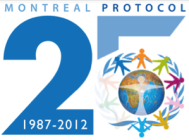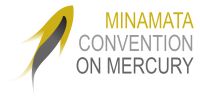Restrictions and bans
Introduction
A pesticide may be banned or its use severely restricted by a country because they pose a high risk to human health or to the environment. Such restrictions and bans can be very relevant when a pesticide is submitted for registration or re-registration, in particular when the use conditions in your country are similar to those in the country where the measure was taken.
When starting the evaluation or re-evaluation of a pesticide, it is recommended to check whether the compound has been banned or severely restricted elsewhere.
Shortcuts | Explanation | Links |
|---|---|---|
Rotterdam Convention |
| |
Stockholm Convention |
| |
Montreal Protocol |
| |
Minamata Convention on Mercury |
International sources
Rotterdam Convention

The Rotterdam Convention [pdf] on the Prior Informed Consent Procedure for Certain Hazardous Chemicals and Pesticides in International Trade requests Parties to notify when a pesticide is banned or severely restricted for health or environmental reasons. Under certain conditions, such a pesticide may be added to Annex III of the Convention, which are chemicals subject to the prior informed consent procedure. The Rotterdam Convention is therefore a good source to check whether a pesticide has been banned or severely restricted elsewhere:
- Pesticides listed in Annex III.
All pesticides in Annex III have been banned or severely restricted in at least two countries in different regions, or have been identified as severely hazardous pesticide formulations. For each Annex III chemical a Decision Guidance Document is available providing technical information on the pesticide and the justifications for inclusion of the compound in Annex III.
- Pesticides notified as banned or severely restricted.
These pesticides will often not (yet) been added to Annex III, but one or more notifications of a ban or severe restriction have been received by the Convention. A database lists all the received notifications and provides summaries of the justifications for these measures. The database includes all notifications, whether the pesticide has been subsequently been added to Annex III or not.
- Proposals for severely hazardous pesticide formulations.
A database lists all the proposals that have been received for severely hazardous pesticide formulations and provides summaries of the justifications for these measures. The database includes all proposals, whether the pesticide has been subsequently been added to Annex III or not.
- Chemicals recommended for listing in Annex III. These are chemicals recommended by the CRC for listing in Annex III of the Convention. A draft decision guidance document (DGD) has been published and will be considered by the COP at its next meeting.
- Chemicals scheduled for review by the Chemical Review Committee (CRC). These are so-called "candidate chemicals" and are scheduled for review by the Chemical Review Committee (CRC). No DGD is available yet.
Stockholm Convention
The Stockholm Convention on Persistent Organic Pollutants (POPs) identifies pesticides which have been categorized as POPs. These possess a particular combination of physical and chemical properties such that, once released into the environment, they:
- remain intact for exceptionally long periods of time (many years);
- become widely distributed throughout the environment as a result of natural processes involving soil, water and, most notably, air;
- accumulate in the fatty tissue of living organisms including humans, and are found at higher concentrations at higher levels in the food chain; and
- are toxic to both humans and wildlife.Parties to the Convention commit themselves either to eliminate or restrict production and use of these chemicals, or reduce their unintential release.
If your country is a Party to the Stockholm Convention, registration of pesticides listed as POPs will not be possible or will need to be restricted. If they have been reviewed by the POPs Review Committee, risk profiles will have been elaborated. Pesticdes under review for listing under the Convention may also need special attention in the registration process:
- The list of POPs under the Stockholm Convention.
- Chemicals (including pesticides) that have been reviewed for listing under the Convention, and for which a risk profile and risk management evaluation are available.
Montreal Protocol
 The Montreal Protocol on Substances that Deplete the Ozone Layer was designed to reduce the production and consumption of ozone depleting substances in order to protect the earth’s fragile ozone layer. The Montreal Protocol has achieved universal participation by all States and one regional economic integration organization – the first multilateral environmental agreement ever to attain global participation.
The Montreal Protocol on Substances that Deplete the Ozone Layer was designed to reduce the production and consumption of ozone depleting substances in order to protect the earth’s fragile ozone layer. The Montreal Protocol has achieved universal participation by all States and one regional economic integration organization – the first multilateral environmental agreement ever to attain global participation.
Parties to the Montreal Protocol commit themselves to reduce and eventually (in most cases) eliminate the production and use of various ozone depleting substances
- The regulated substances can be found in the Convention text
- Among them is one pesticide: the fumigant methyl bromide, which is listed in Annex E of the Convention. The control methods applicable to methyl bromide are listed in Article 2H
Minamata Convention on Mercury
 The Minamata Convention on Mercury is a global treaty to protect human health and the environment from the adverse effects of mercury. The Convention, among other objectives, aims to phase out and phase down mercury use in a number of products. These include, "Pesticides, biocides and topical antiseptics", of which the manufacture, import or export shall, in principle, not be allowed after 2020 (see Annex A of the Convention text)
The Minamata Convention on Mercury is a global treaty to protect human health and the environment from the adverse effects of mercury. The Convention, among other objectives, aims to phase out and phase down mercury use in a number of products. These include, "Pesticides, biocides and topical antiseptics", of which the manufacture, import or export shall, in principle, not be allowed after 2020 (see Annex A of the Convention text)
National or regional sources
[to be identified - only for countries that are not party to the above conventions]

